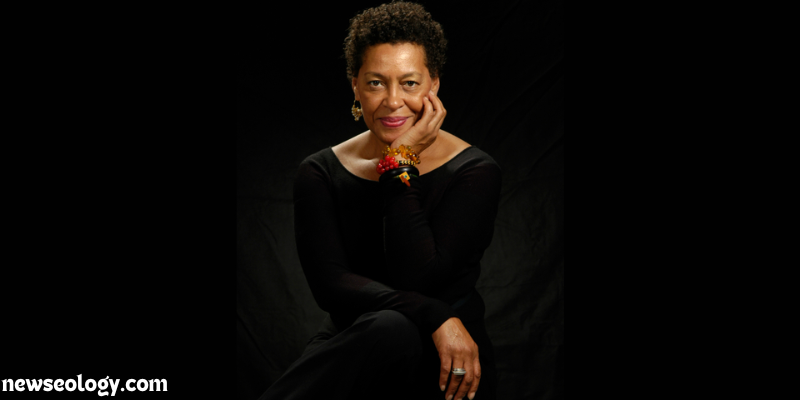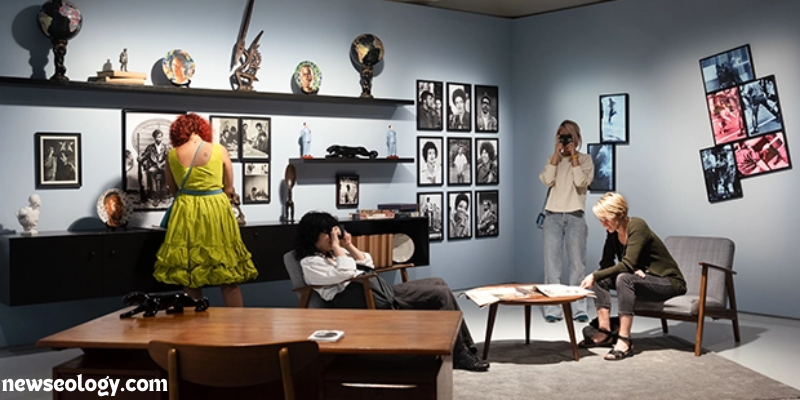Carrie Mae Weems How Art Sparks an Anthropological Discussion on Culture

Carrie Mae Weems has long been regarded as one of the most powerful voices in contemporary art, using her work to dissect, question, and reflect on societal structures.
She navigates themes like race, identity, and power with a lens that transcends traditional art forms, engaging in what could be described as an anthropological debate.
This content delves into how her art sparks conversations about culture, memory, and power dynamics, while centering around the keyword: Carrie Mae Weems art an anthropological debate.
Who Is Carrie Mae Weems?
Carrie Mae Weems is an acclaimed African American artist whose body of work spans photography, video, and installation.
Since the 1980s, Weems has been at the forefront of exploring societal issues, especially those tied to race, class, gender, and history.
Her ability to address these complex topics has prompted deep discussions, particularly in the context of anthropology, where culture and human behavior are observed and analyzed.
Weems’ art challenges viewers to look beyond the surface, encouraging deeper exploration of societal structures.
Understanding Anthropology Through Art
Anthropology is the study of humans, past and present, and it often seeks to understand cultural dynamics, power relations, and social structures.
Carrie Mae Weems, through her work, creates a platform for viewers to examine the anthropological underpinnings of society.
Her art becomes an avenue for analyzing human behavior, highlighting disparities, and opening the door to conversations that would otherwise remain unspoken.
Her focus on marginalized groups ties directly into anthropological debates about identity and culture.
Weems’ Use of Photography A Visual Dialogue

One of Weems’ most iconic mediums is photography, and she uses it as a tool to question how African Americans have been historically represented. Works like The Kitchen Table Series (1990) show intimate portrayals of African American life, unraveling cultural stereotypes and preconceived notions about race and gender.
This series serves as an anthropological study in itself, highlighting daily life while reflecting on broader cultural constructs.
The interplay between subject and viewer in her photographs sparks essential questions about race, identity, and power.
The Power of Narratives: Challenging Historical Representations
In her artwork, Carrie Mae Weems confronts the way history is written and presented, especially in regard to African Americans.
In From Here I Saw What Happened and I Cried (1995-1996), Weems appropriates historical images of enslaved people and reinterprets them through a critical lens.
She adds red filters and captions, transforming these images into powerful statements about exploitation, resilience, and the skewed narratives of history.
This series serves as an anthropological debate about who controls the narrative and how cultural memories are shaped.
Weems and the Debate on Race and Identity
Carrie Mae Weems’ exploration of race and identity delves deep into the anthropological study of social constructs.
Her works ask: How is identity formed? Who decides what cultural traits are valued or dismissed? By using art to explore the human experience, particularly the experiences of African Americans, Weems ignites an anthropological debate about race.
Her visual narratives bring to light the tension between individual identity and societal labels, forcing viewers to reflect on their own biases.
Culture as a Central Theme in Weems’ Art
Culture is at the core of Carrie Mae Weems’ art, offering a broad and nuanced reflection of African American life and its complexities.
From family dynamics to larger societal issues, her work invites viewers to engage in discussions about culture’s role in shaping identity and experiences.
By focusing on African American life and history, she provides a counter-narrative to the mainstream portrayal of Black culture, fostering an anthropological debate about what defines culture and how it is portrayed through art.
Gender and Power: Anthropological Reflections in Weems’ Work
Gender roles and power structures are recurring themes in Carrie Mae Weems’ work. The Kitchen Table Series serves as a prime example of how she uses her art to investigate the complexities of power dynamics within intimate spaces.
By centering on a Black woman’s experience, Weems taps into anthropological discussions about gender, authority, and interpersonal relationships.
Her exploration of how gender intersects with race and class brings attention to the ways these social constructs affect both personal and collective identities.
The Role of Memory in Carrie Mae Weems’ Art
Memory is another significant theme in Weems’ work, especially in how it intersects with historical narratives and cultural identities.
Through her art, Weems explores how memory is preserved, erased, or manipulated by societal forces. Her series like From Here I Saw What Happened and I Cried not only reflect on collective memory but also call attention to the erasure of certain histories.
This invites an anthropological debate about the power of memory in shaping cultural and societal values.
Weems as a Social Commentator: Art as Activism
Carrie Mae Weems’ art is not just aesthetic but also activist in nature. By questioning societal norms and offering alternative perspectives, her work encourages viewers to engage in a critical analysis of the status quo.
Weems uses her art to comment on social inequalities, whether it be racial discrimination, gendered power dynamics, or economic disparities.
This intersection of art and activism places her work at the heart of an anthropological debate, challenging how society values certain groups while marginalizing others.
Conclusion:
Carrie Mae Weems has established herself as a transformative artist whose work extends far beyond visual aesthetics.
By sparking anthropological debates through her exploration of culture, identity, race, and power, Weems has made an indelible mark on both the art world and cultural studies.
Her art compels viewers to reconsider their understanding of history and society, pushing the boundaries of how art can function as a tool for both social commentary and anthropological discourse.
The conversations she ignites are essential to a deeper understanding of human behavior and societal structures, making her a key figure in both art and anthropology.
Carrie Mae Weems continues to redefine the relationship between art and society, using her work as a platform to raise awareness and provoke thought.
As we examine her art, it becomes clear that she is not only an artist but also a storyteller, a historian, and an anthropologist, contributing to the ongoing debates about culture and identity in an ever-changing world.
Her work continues to inspire and challenge, creating a lasting impact on the conversations surrounding race, power, and history.
Frequently Asked Questions
How does Carrie Mae Weems’ art spark an anthropological debate?
Weems’ art encourages discussions on cultural and social issues that are central to anthropology.
By addressing topics like race, identity, and power, her work invites viewers to reflect on the cultural constructs that shape human experiences, making her work a catalyst for anthropological debates.
What are some of the recurring themes in Carrie Mae Weems’ work?
Weems frequently explores themes such as race, identity, gender, power, and history. Her work questions societal structures and challenges the mainstream portrayal of African Americans, often through a lens of cultural reflection.
How does Carrie Mae Weems use photography in her work?
Weems uses photography to confront historical representations of African Americans and challenge cultural stereotypes.
Series like The Kitchen Table Series and From Here I Saw What Happened and I Cried are examples of her use of imagery to provoke critical thinking about race and history.
What is The Kitchen Table Series about?
The Kitchen Table Series (1990) is one of Carrie Mae Weems’ most famous works.
It explores the daily life of an African American woman, revealing the intersection of race, gender, and power within intimate and domestic spaces.
The series is often regarded as an anthropological study of Black womanhood.
How does Carrie Mae Weems address historical narratives in her art?
Weems often critiques how history is recorded and presented, especially with regard to African Americans.
In works like From Here I Saw What Happened and I Cried, she recontextualizes historical images to comment on exploitation, resilience, and the control of cultural narratives.
What role does culture play in Carrie Mae Weems’ work?
Culture is central to Weems’ art, particularly African American culture. Through her works, she invites viewers to engage in discussions about how culture shapes identity, history, and societal structures.
Her art serves as a critical reflection on the portrayal and perception of Black culture in society.
How does Carrie Mae Weems explore power dynamics in her work?
Weems frequently explores power dynamics, particularly in relation to race and gender. Her works question who holds power in society and how marginalized groups are affected by these power structures.
This is evident in pieces like The Kitchen Table Series, where gendered power relationships are examined in intimate spaces.
How does Carrie Mae Weems use memory in her art?
Weems often delves into collective and personal memory, exploring how histories are remembered or erased.
Her work comments on the preservation of cultural memory and the manipulation of history to favor certain groups, while marginalizing others.
What is the legacy of Carrie Mae Weems’ work in art and anthropology?
Carrie Mae Weems has left a lasting legacy by bridging art and anthropology. Her ability to challenge cultural and societal norms through art has made her a pivotal figure in both fields.
Weems’ work continues to inspire critical discussions about identity, history, and social justice, marking her as one of the most influential contemporary artists.









